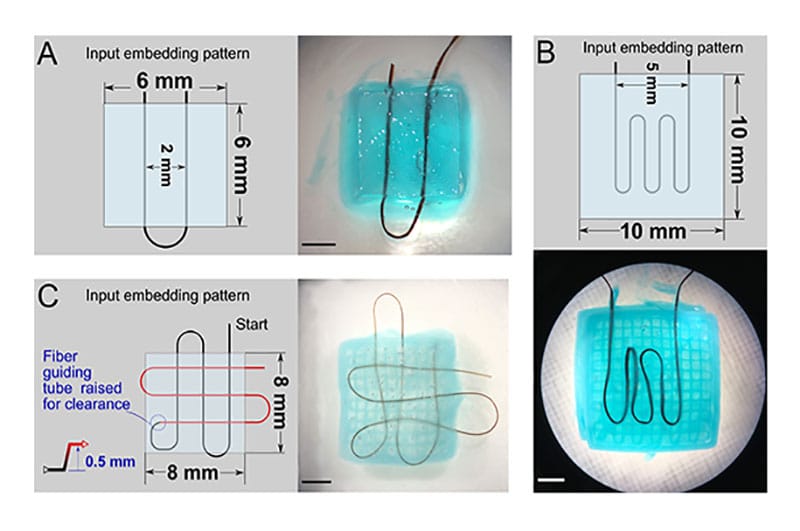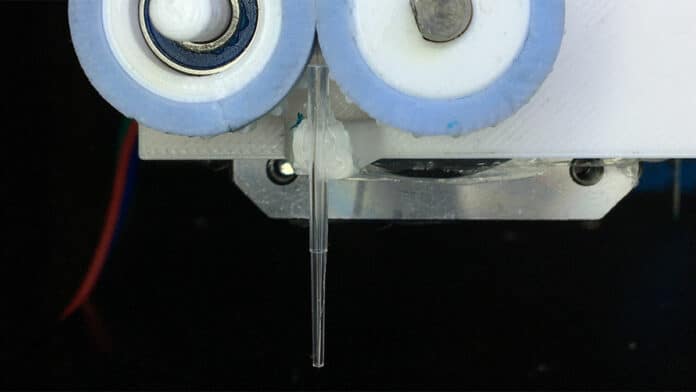Hydrogels are highly porous, hydrophilic networks of crosslinked polymers with tunable mechanical, chemical, and stimuli-responsive properties. Recent advances in hydrogel 3D printing have enabled the fabrication of hydrogel structures with complex 3D geometry and a wide range of applications, including tissue engineering, soft robotics and drug delivery.
Now, the researchers in Carnegie Mellon University’s College of Engineering have created an open-source, commercially available fiber extruder to benefit future research with hydrogels and soft robotics.
Hydrogels begin in liquid form as monomers. This viscous liquid, which can be made of synthetic or natural materials from polyester to sodium alginate, can be used as ink for 3D printing. When hydrogels are placed in the right environment, the monomers in the liquid crosslink to form polymers, which gives shape to the hydrogel and lets it trap water. However, many hydrogel inks are so soft that the newly printed structures cannot support their own weight and yield inferior geometric fidelity. That’s one drawback of working with hydrogels for robotic applications.

To solve this problem and allow hydrogels to be used in a greater variety of tasks and harsh environments, researchers designed a continuous fiber extruder, a device that reinforces the hydrogels, so they don’t easily break apart or lose their shape when loaded. It is designed to work with common low-cost, open-source desktop 3D printers equipped with a FRESH print-head and extrude fibers of different sizes and material types.
Creating an open-source, commercially available fiber extruder will benefit future research with hydrogels. The team’s extruder design is relatively cheap at about $53, and is also compatible with many at-home 3D printing devices and has been tested successfully in hydrogels embedded with both synthetic and natural fibers, including silk and collagen. The results published in the paer serve almost as a formula for other researchers who want to experiment with fiber embedded hydrogel 3D printing.
Hydrogels can be applied to a wider variety of situations. Their unique attributes like flexibility and softness make them ideal tools for drug delivery and tissue engineering, but physical sturdiness opens the door to broader tasks in soft robotics.
“We’re really interested in how we can use biodegradable materials in robots,” says Webster-Wood, an assistant professor of mechanical engineering who founded the Biohybrid and Organic Robotics GroupOpens in new window. “These plant-based hydrogels are a really interesting direction, because we can basically farm the materials for the robots and make them renewable.”
Journal reference:
- Wenhuan Sun, Adam Feinberg, and Victoria Webster-Wood. Continuous fiber extruder for desktop 3D printers toward long fiber embedded hydrogel 3D printing. HardwareX (2022). DOI: 10.1016/j.ohx.2022.e00297.
